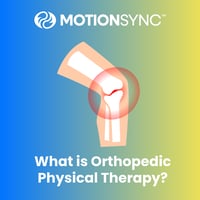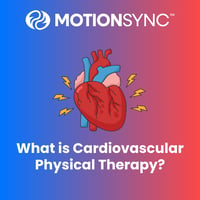Are you struggling with joint pain, recovering from a sports injury, or dealing with chronic...
Total Hip Replacement: Everything You Need To Know

A total hip replacement (THR) is a common and highly effective surgery for individuals dealing with chronic hip pain, arthritis, or mobility loss. Whether due to aging, injury, or degenerative joint conditions, a hip replacement can dramatically improve quality of life. But surgery is just the beginning. To ensure a full and functional recovery, physical therapy plays a critical role in restoring strength, flexibility, and confidence in movement.
If you’re preparing for or recovering from a hip replacement, this guide will walk you through the process, what to expect, and how physical therapists near you can help.
Why Total Hip Replacement Is Performed
Your hip joint is a ball-and-socket joint that supports weight and enables movement. Over time, conditions like:
-
Osteoarthritis
-
Rheumatoid arthritis
-
Hip fractures
-
Avascular necrosis
can damage the joint and cause severe pain, stiffness, and reduced mobility. When non-surgical treatments like medication, injections, and activity modification no longer provide relief, a total hip replacement may be recommended.
What Happens During Hip Replacement Surgery?
In a total hip replacement, the damaged portions of your hip are replaced with prosthetic components:
-
A metal or ceramic ball replaces the femoral head
-
A metal socket and plastic liner replace the damaged acetabulum (hip socket)
The goal is to reduce pain, restore mobility, and improve function.
Post-Surgery Recovery Timeline
While every patient is different, here’s a general recovery timeline:
Weeks 1-3:
-
Focus on pain management and mobility
-
Use of walker or crutches
-
Begin gentle range-of-motion exercises with a physical therapist in NYC or your area
Weeks 4-6:
-
Transition to a cane or walking independently
-
Strengthening of hip muscles and core
-
Balance and gait training with physical therapy support
Weeks 6-12:
-
More advanced strengthening and endurance activities
-
Climbing stairs, walking longer distances
-
Return to low-impact activities (swimming, cycling)
After 3 months:
-
Continued progress in strength and mobility
-
Clearance for more activities as advised by your surgeon and PT
Why Physical Therapy Is Key to Recovery
After hip replacement surgery, your body needs guidance to rebuild and relearn movement safely. Physical therapy near you can:
✅ Help reduce pain and swelling ✅ Improve range of motion and hip flexibility ✅ Restore strength to your glutes, quads, and hamstrings ✅ Train proper walking patterns to avoid limping ✅ Prevent compensatory movement and future joint issues
A skilled physical therapist in Manhattan, Queens, or Brooklyn will customize your rehab plan and track your progress to ensure you return to normal activities with confidence.
At-Home Recovery Tips
In addition to working with a PT near you, here are a few tips to support your recovery:
-
Use ice to manage pain and swelling
-
Don’t skip your home exercise program
-
Avoid low chairs or bending past 90 degrees
-
Practice good posture and move with intention
-
Maintain a healthy diet for joint and tissue healing
How to Find the Best Physical Therapy for Hip Replacement
If you're looking for the best physical therapy near you for post-hip replacement care, MotionSync makes it easy to find expert help. We connect you with trusted physical therapists in NYC, Brooklyn, Manhattan, and Queens who specialize in joint replacement rehab.
Your journey doesn’t end with surgery—MotionSync is here to support your full recovery!





